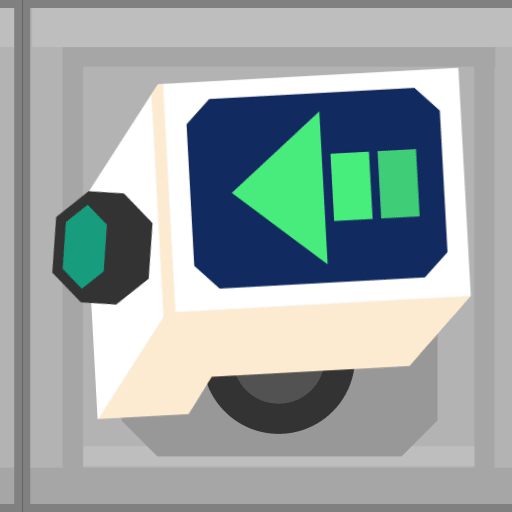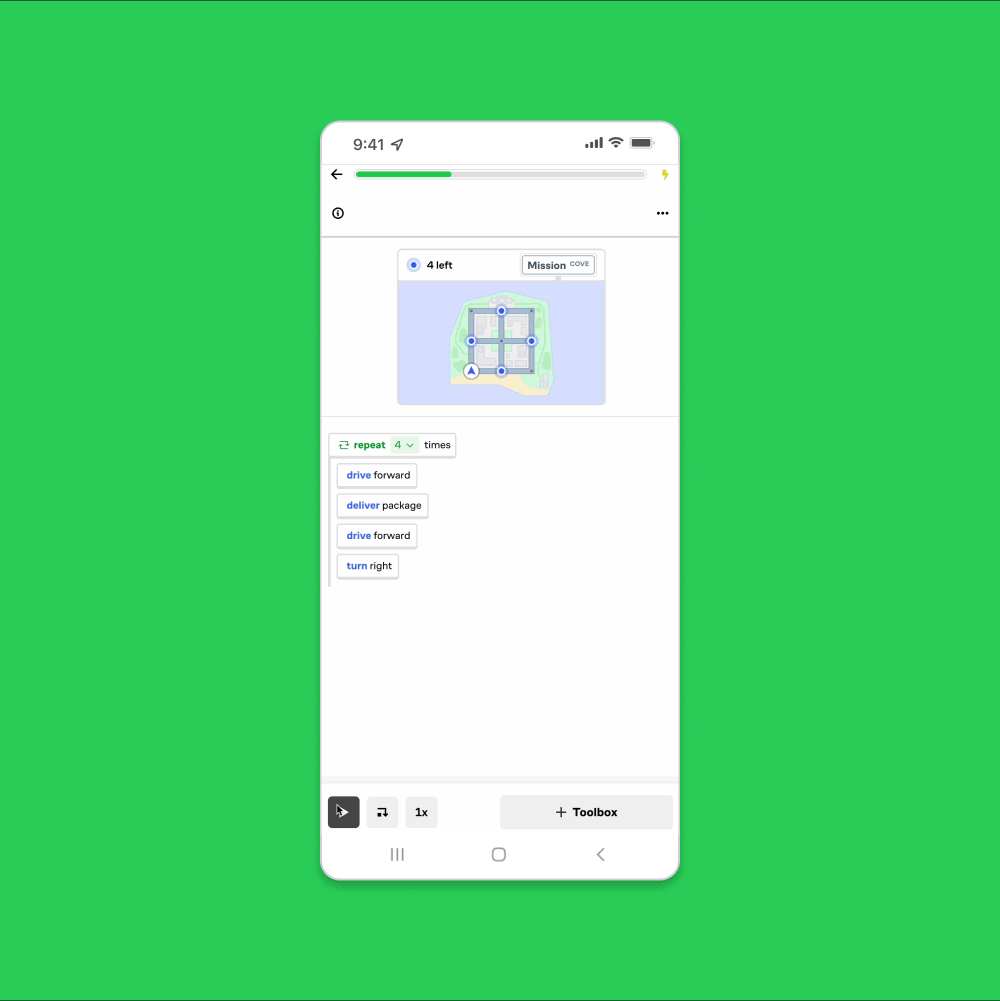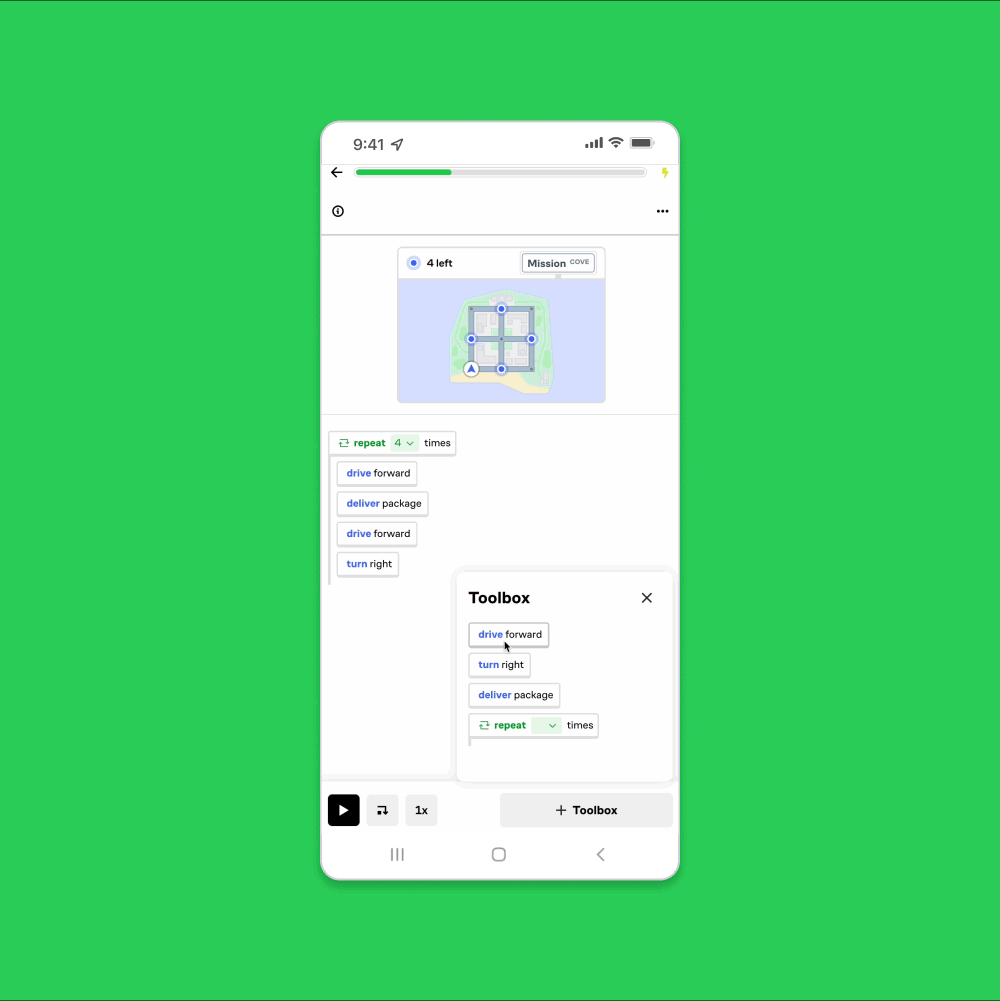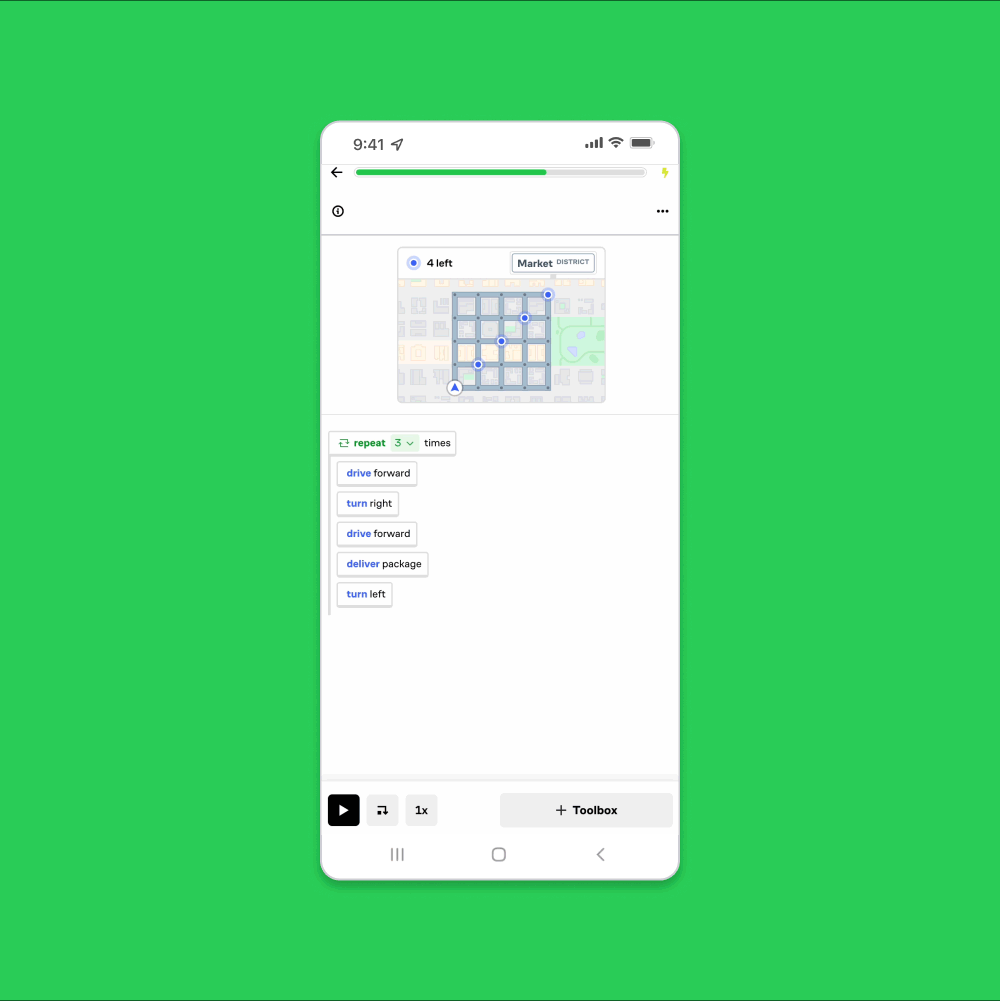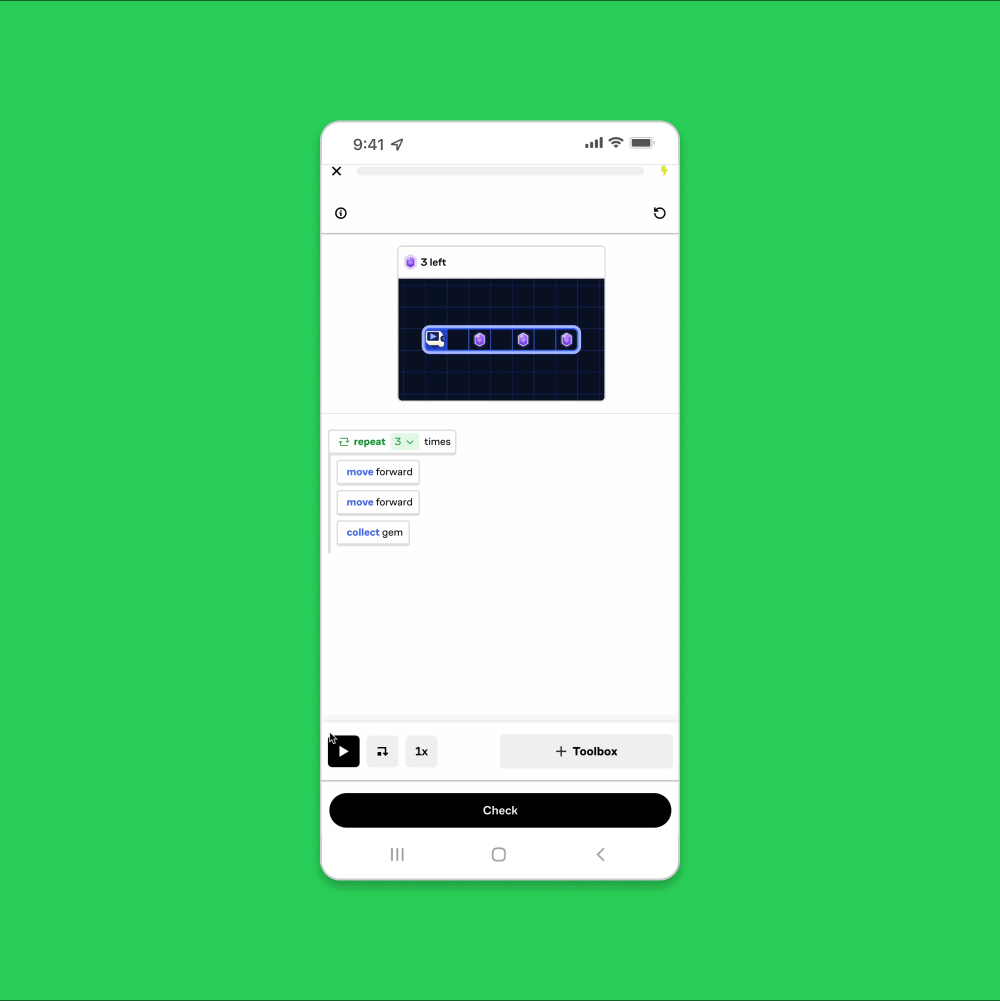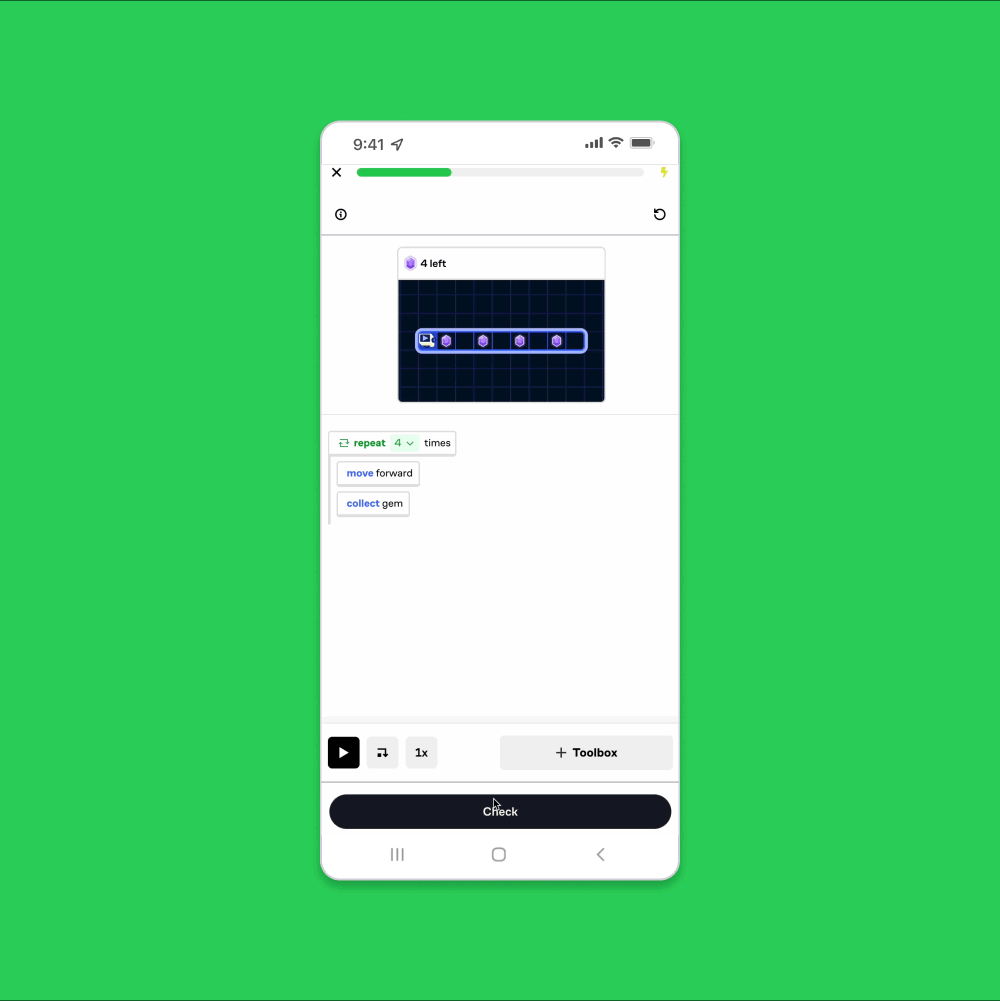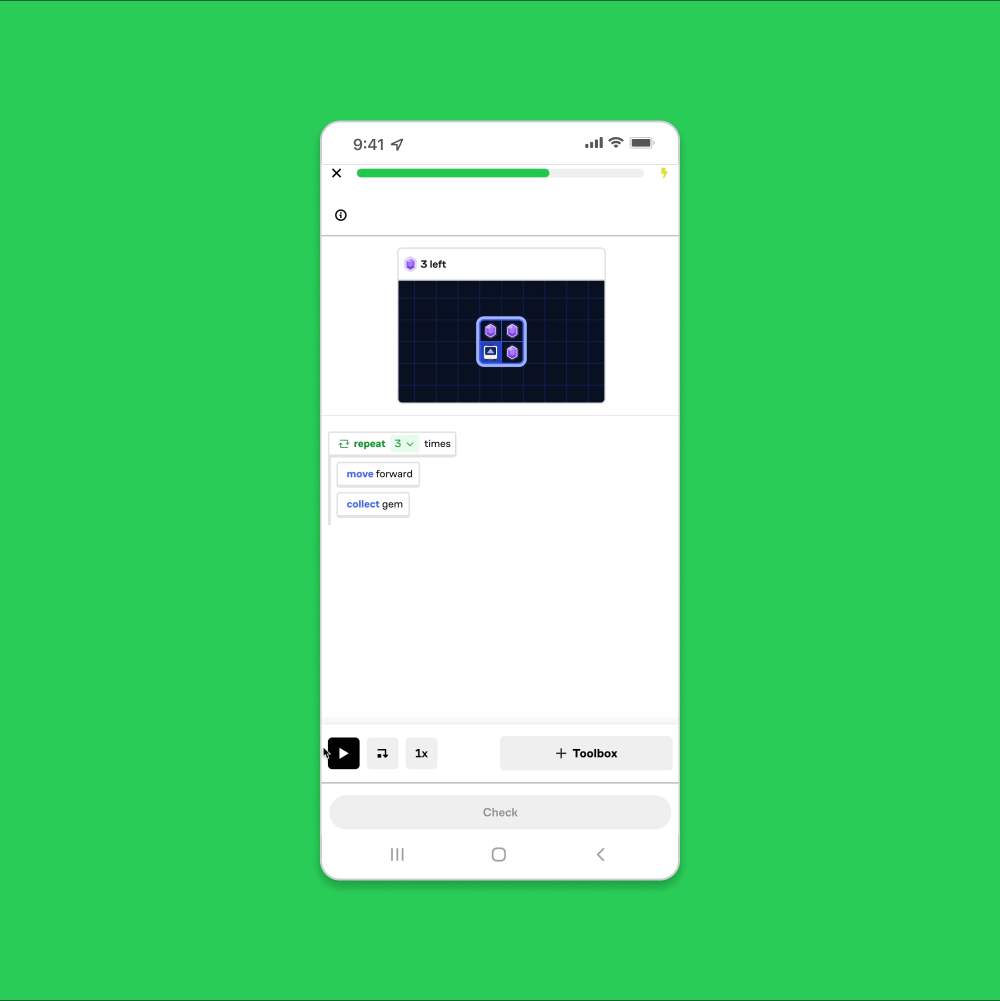Thinking in Code
Designing an interactive CS/Programming course for young professionals who want to learn the basics.
Software: Figma, Photoshop, After Effects, Rive

Brilliant is a STEM learning app on iOS, Android, and the web. It’s a platform where players engage with 60+ interactive courses to improve their problem solving skills.
Goal: The product vision was to introduce our first programming course for young professionals.
Strategy: An interactive block coding tool where the user builds and tests small apps to learn programming concepts.
Timeline: 5 months for the MVP launch and 4 months for the updated course.
Team: 6 individual contributors.
My first priority was to align the team on a narrative that was appealing to our core audience and also fit our brand. This happened in three main phases over a couple weeks.
Facilitate a brainstorming session with the team to generate a shortlist of ideas that felt in-line with our brand.
Generate visual concepts together with another artist to use as artifacts.
Validate our ideas through user research targeted are the core demographic for this course.
Research
Affinity Mapping
Clustered and prioritized ideas from the brainstorming session.
Ideation
Initial concepts visualizing the product feature requirements. This was one artifact used in the user interviews.
User Testing
Moderated user interviews with Brilliant users who matched our target demographic.
Key Takeaways
Align the story to actual examples of coding in the real world.
Feed into my love for sci-fi and futuristic themes.
Make it accessible for novice programmers.
Feeling game-like is a bonus as long as it isn’t patronizing to users.
Design
For the MVP launch, we chose the video game developer narrative since it was both accessible and fun without having overly contrived real-world scenarios.
Iconography
Rough sketches exploring the robot and other interactive objects in each level.
MVP icons used in the interactive solvable puzzles.
Motion Design
The animation states of the robot and the success state feedback.
Illustrations
In-lesson scene setter illustrations focus on the core lesson topic and visualize the concept.


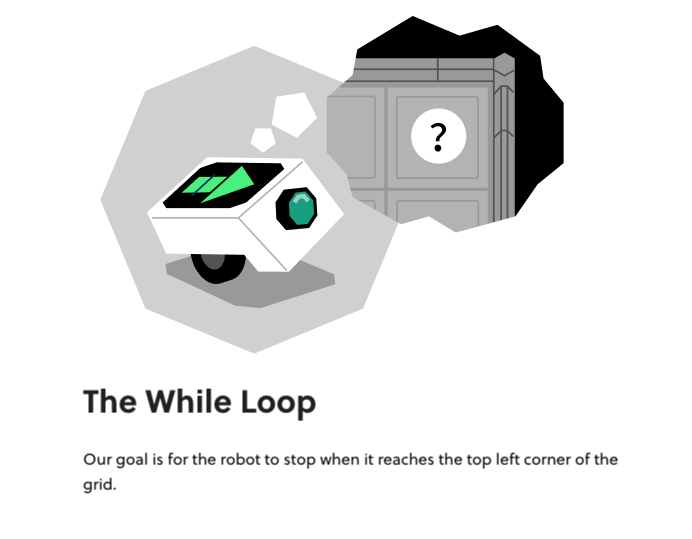

Test
MVP Launch Key Learnings
The course broke a record for week 1 retention and was immediately among the top engaged courses in the product, validating that users wanted this content.
Distinct practice lessons created engaging additional content.
Re-skinning the block coding interactive was a long process and would require further work to make turn key.

Brand Refresh
Over the following year, there were big changes to the product that impacted how we approached the updated course. Creative direction was evolving after a brand refresh and the art style saw updates as a result among other design systems.
Iterate
As part of our brand refresh, we wanted to lean into being a trusted and effective product while using fun, game-like qualities as a secondary attribute. For the core lessons, we used a Google maps-inspired, self-driving delivery vehicle narrative.
Illustrations
The delivery truck would act like a main character for the illustrations that mirrors the user journey, improving throughout the course and encountering increasingly challenging situations to solve.
The final vehicle design and interactive visual design.
Sketches of the self driving delivery vehicle exploring believability and humor.
Turnaround vector assets to help the team ideate faster.

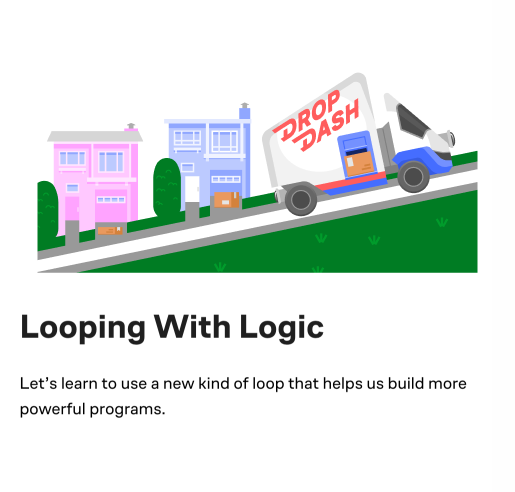
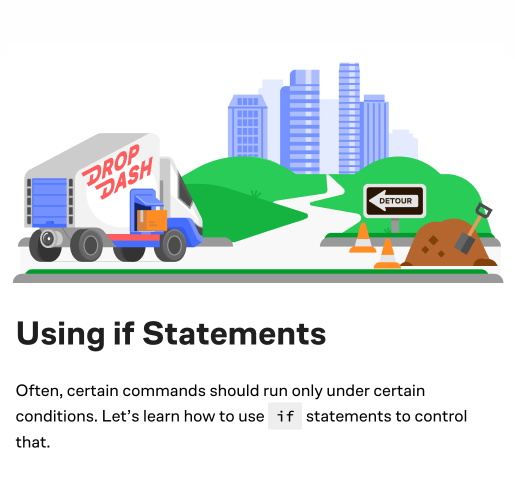



Visual Design & Iconography
The increased focus on practice lessons meant that we wanted to visually distinguish practice from core lessons in the block coding interactives.
Google Maps-inspired visual design (core lessons).
Video game-inspired visual design (practice).
Motion Design
Visual feedback for each end state that informs the user of the program result.




